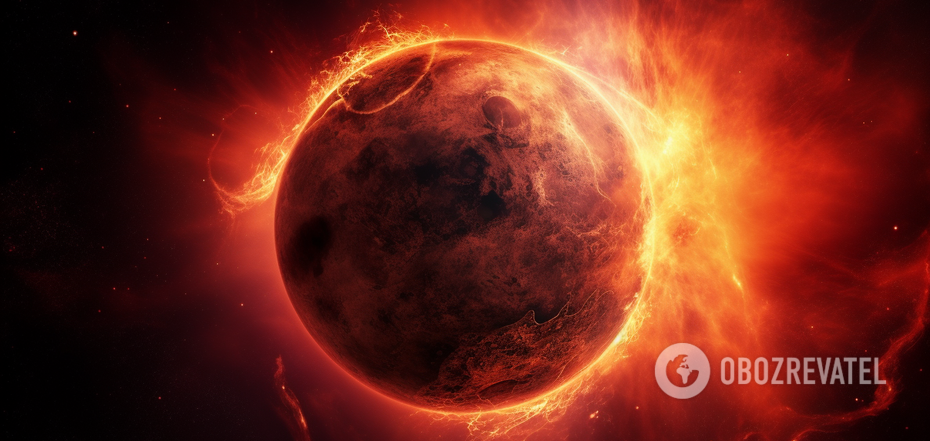News
Scientists found a fluffy exoplanet that rains molten sand
NASA's James Webb Space Telescope (JWST) has helped astronomers discover that the exoplanet WASP-107b, which moves around its star in a retrograde orbit, is experiencing molten sand rains. This is not the first time this gas giant has surprised researchers.
A new paper on observations of the distant world was published in Nature. WASP-107b is a gas giant that orbits its star backwards (in a so-called retrograde orbit). The planet is also trailed by a long and bright tail of helium, which makes it the largest comet in the universe. The tail is formed as a result of the stellar wind blowing part of the planet's atmosphere away.
As if this planet weren't strange enough, it has now been found to show signs of molten sand rains.
The new information about the planet was discovered by astronomer Leen Decin of the Catholic University of Leuven and her colleagues using the JWST Mid-Infrared Imaging Survey Instrument (MIRI).
MIRI allowed the researchers to peer deep into the atmosphere of the gas giant WASP-107b, which orbits a star slightly smaller than our Sun at a distance of about 200 light-years from us.
From the MIRI data, Decin and her colleagues saw that WASP-107b's atmosphere absorbs light at the same wavelengths as water vapor and sulfur dioxide, but this signal is sometimes hidden by dense clouds of silicates (extremely tiny grains of sand) in the planet's upper atmosphere.
According to the scientists, WASP-107b orbits its star, moving in the wrong direction and tilting at a large angle every six days. The planet is so close to its star that it absorbs a lot of heat from it. As a result, all the available gas on the planet is dissipated. This leads to the fact that it, having about the same mass as Neptune, fills a sphere the size of Jupiter (the real Neptune is 19 times lighter than Jupiter). Therefore, WASP-107b is surprisingly bright, fluffy, and almost transparent to a surprising depth. This feature of the planet allows astronomers to see starlight filtered through much deeper layers of WASP-107b's atmosphere than on ordinary exoplanets.
According to Inverse, based on the MIRI data, Decin and her colleagues suggest that vaporized silicate (sand that is heated to the point of melting and then evaporating) cools in the upper atmosphere of WASP-107b and condenses into tiny particles that first form sand clouds and then rain down. As the pressure deep in the interior of the gas giant maintains a sufficiently high temperature, the sand evaporates again and rises into the upper atmosphere.
"It's very similar to the cycle of water vapor and clouds on our Earth, but with droplets made of sand," explained Michiel Min, an astronomer at the University of Amsterdam, who is a co-author of the study.
Earlier, OBOZ.UA reported that astronomers photographed an exoplanet in a hierarchical quadruple system for the first time.
Subscribe to OBOZ.UA on Telegram and Viber to keep up with the latest events.



























